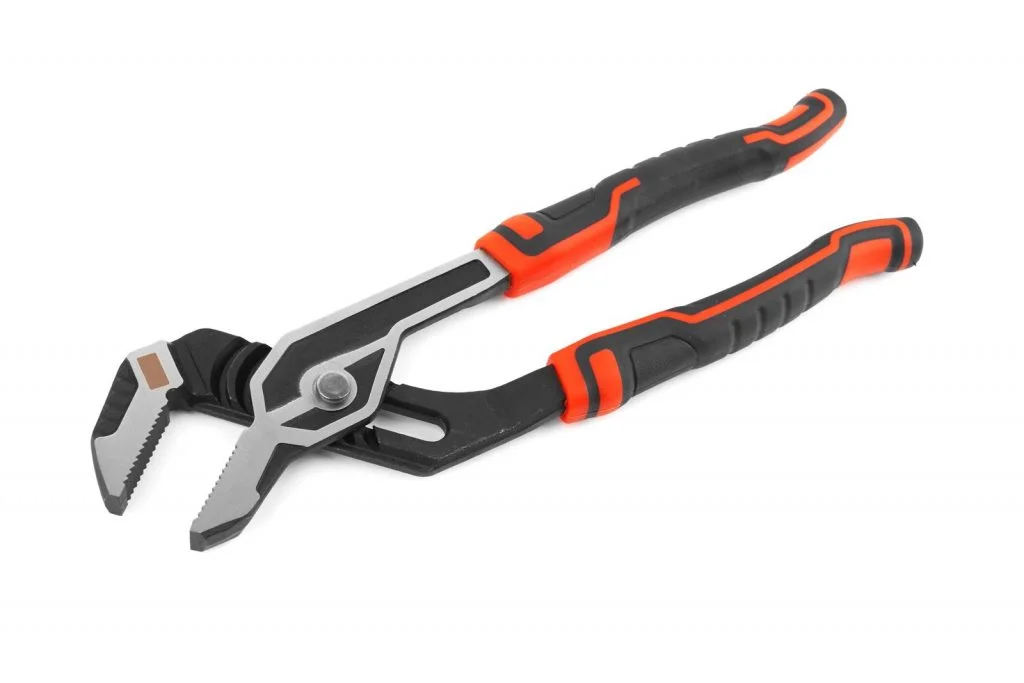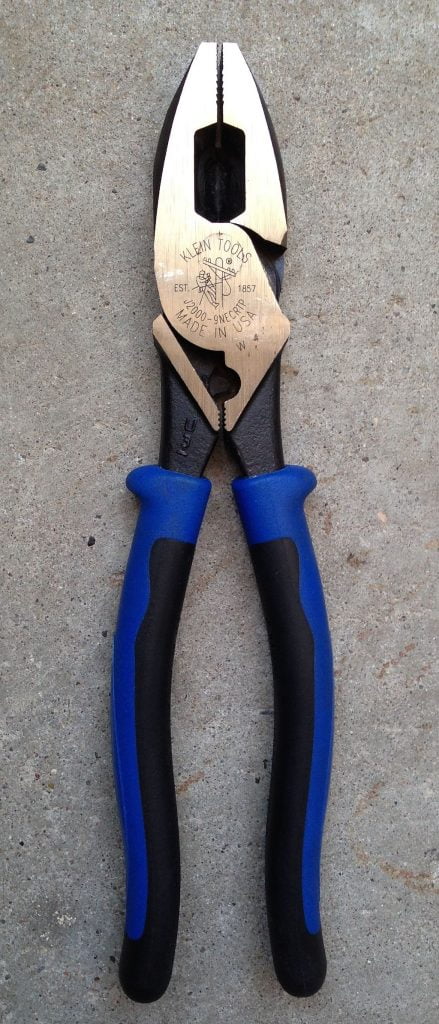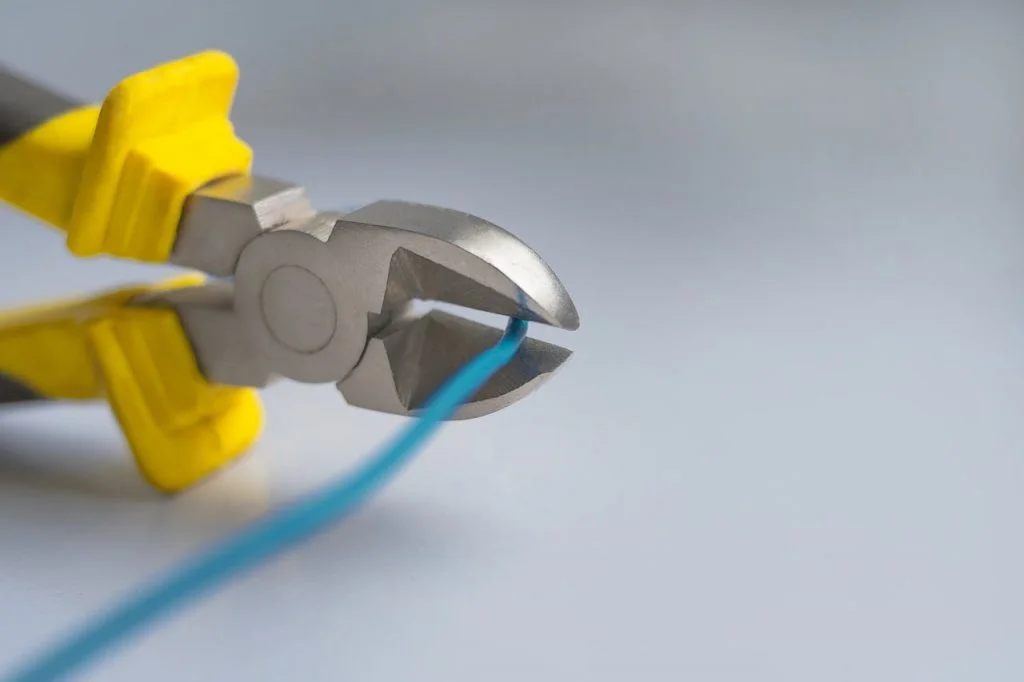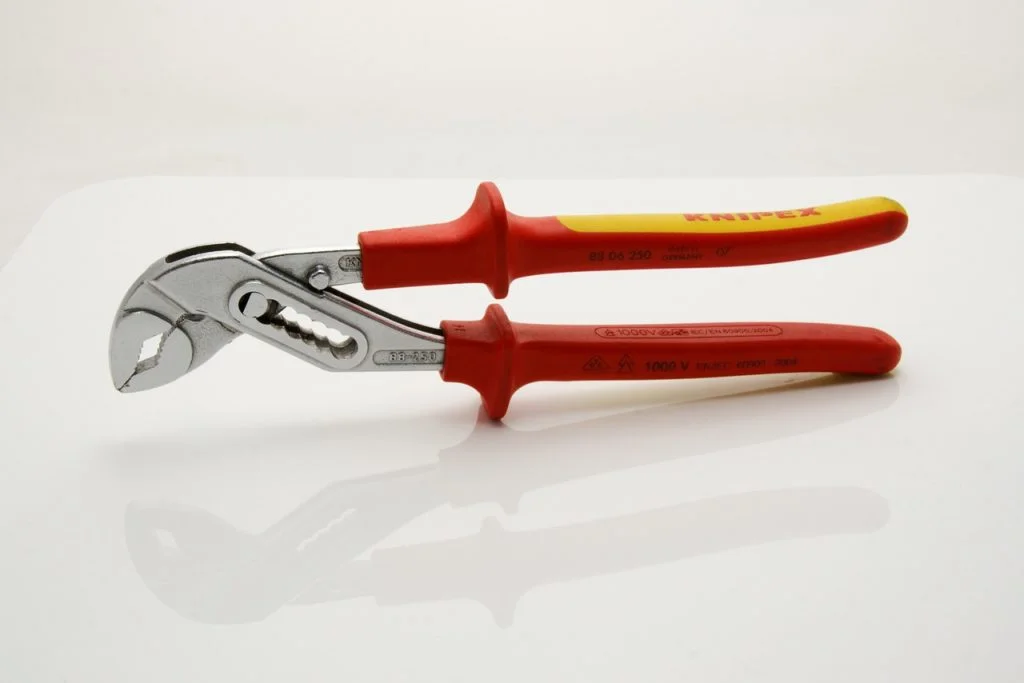Pliers are essential tools that every family’s handyman needs to have in their toolbox. Do you need to tighten or loosen a bolt? You go for a slip-joint plier. Do you need to cut some wire? The Diagonal cutting pliers are excellent for a clean cut. But now, let’s talk about the seven most commonly used pliers and their practical applications, essential for tackling your everyday repair needs.
7 Common Types of Pliers for Your Household

Flat-Nose Pliers
A flat-nose plier is a tool characterized by its flat and smooth jaws. These pliers are incredibly versatile, making them indispensable in various tasks. Their flat jaws allow for a firm grip on objects without causing damage, making them ideal for gripping, bending, and straightening materials like wires, sheet metal, or plastic.
What are Flat-Nose Pliers used for?
- Mechanics – Often in the garage the mechanic uses the flat-nose plier to bend metal parts.
- Electricians – Electricians often use Flat-nose pliers to bend different types of wire together.
How to use the Flat-Nose pliers?
To use a flat-nose plier effectively, simply grasp the object firmly between the jaws and apply the desired pressure.

Needle-Nose Pliers
A needle-nosed plier, often called a long-nose or pointy-nose plier, is a versatile tool recognizable by its long, slender jaws tapering to a point. These pliers find widespread use across various trades due to their precision and versatility.
What are Needle-Nose Pliers used for?
- Electrician – Needle-nosed pliers excel in gripping and manipulating small wires and components in tight spaces.
- Carpentry and Woodworking – these pliers come in handy for holding small nails or staples in place while hammering, or for reaching into tight spots where fingers or larger tools can’t reach.
How to use the needle-nose pliers?
To use needle-nosed pliers effectively, grasp the object firmly between the jaws, utilizing the tapered tip for precise control.

Slip-Joint Pliers
A slip joint plier, often known as an adjustable plier, is a versatile tool distinguished by its adjustable pivot point that allows for two different jaw widths. These pliers are widely employed across various trades due to their adaptability and functionality.
What are Slip-Joint Pliers used for?
- Plumbing – Slip joint pliers are invaluable for gripping and turning pipes and fittings of varying sizes.
- Automotive – Slip joint pliers are indispensable for tasks such as loosening hose clamps or removing stubborn fasteners.
How to use the Slip-Joint pliers?
To use slip joint pliers effectively, adjust the pivot point to the desired jaw width for the task at hand, then grasp the object firmly between the jaws and apply the necessary force.

Linesman Pliers
Lineman pliers, also known as Combination pliers, Kleins, or Side cutting lineman pliers are characterized by their flat gripping surface at the short nose. Linesman Pliers feature a shorter flat surface and a concave gripping area, ideal for light engineering tasks such as working with metal bars.
What are Linesman Pliers used for?
- Electricians – Great use for cutting and stripping wires, bending wire ends for connections, or twisting wires together for splicing.
- General Maintenance / Construction – Useful for cutting small bolts or manipulating metal or plastic parts.
How to use the Linesman pliers?
To use lineman pliers, grip the handles firmly and place the material between the jaws. For cutting, position the wire or nail near the cutting edge and squeeze the handles together to make a clean cut. For gripping or bending, hold the material securely between the jaws and apply the needed force to manipulate it as desired.

Diagonal Cutting Pliers
Diagonal cutting pliers, often called diagonal cutting pliers or simply wire cutters, are specialized tools designed for cutting wire and small pins. Their cutting edges are set at an angle, allowing for a flush cut. Unlike other types of pliers, diagonal-cutting pliers can not be used to grab or bend anything.
What are Diagonal Cutting Pliers used for?
- Electricians – You need diagonal cutting pliers for tasks such as cutting electrical wires, trimming plastic ties, and snipping small metal pins.
How to use the Diagonal Cutting pliers?
To use diagonal cutting pliers, open the handles and place the wire or material between the angled cutting edges. Squeeze the handles together firmly to make a clean cut.

Locking Pliers (Vise-Grip)
Locking pliers, often called Vise-Grips, Mole Grips, or Mole Wrench, are a versatile tool known for their adjustable locking mechanism. They can grip objects tightly and stay clamped without continuous pressure.
What are Locking Pliers used for?
- Metal Work – You need locking pliers for tasks like holding objects steady, removing stripped screws, and clamping materials together for welding or gluing.
How to use the Locking Pliers?
To use locking pliers, adjust the screw at the handle’s end to set the jaws’ width. Squeeze the handles together to clamp the jaws onto the object firmly. The pliers will lock in place, providing a secure grip. To release, simply pull the lever.
Tongue and Groove Pliers (Channellock)
Tongue and Groove pliers, also known as Channellocks, Adjustable pliers, Multi-Grips, or Water pump pliers are adjustable tools with angled jaws and a series of grooves that allow the upper jaw to move in and out. This design provides a wide range of jaw openings.
What are Tongue and Groove Pliers used for?
- Plumbers – Plumbers often use tongue and groove pliers for tasks like gripping pipes, turning nuts and bolts, and holding irregularly shaped objects.
How to use the Tongue and Groove Pliers?
To use tongue and groove pliers, adjust the upper jaw by sliding it into the desired groove to fit the object’s size. Grip the handles firmly and apply the necessary pressure to turn, hold, or twist the object.
Final Words
We’ve reached the end of our article on the 7 most common pliers. We hope you’ve learned about their various uses. Remember, pliers are essential tools for any household. Which type of pliers is your favorite, and what do you use them for? Share your thoughts in the comments below!
Hi, I’m Johnny, the chief editor at Svetools.com. Since I was a kid, DIY has been my thing – playing around with all sorts of tools, from power tools to classic wrenches. I started the Svetools blog to share my love for DIY and all things a house Handyman should know. Whether it’s product reviews or essential how-to’s articles, I cover it all. Need assistance or have a question? Hit me up using the details on our contact us page.


